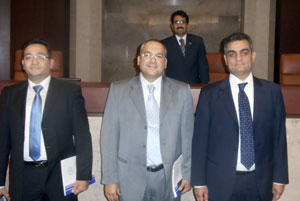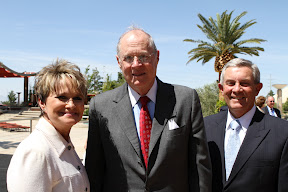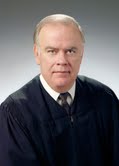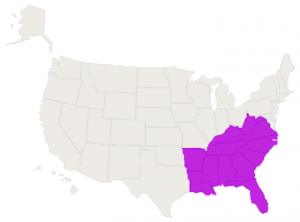Administrative Office of the Courts and ABA Commission on Homelessness and Poverty
San Francisco, CA, Friday, May 11, 2012
Reported by Michael Roosevelt, CJER, California
According to the 2012 Judicial Council of California Homeless Court Fact Sheet, homelessness is a major problem affecting the country, states, cities and counties. In a 2008 study by Nieto, Gittelman, and Abad published the International Journal of Psychosocial Rehabilitation, the average number of homeless people at any given time in the United States is 750,000, 1 percent of the U.S. population. Nationally, the largest percentage increase of homeless subpopulations between 2005 and 2007 was in the number of family households, which increased by more than 3,200 households, or 4 percent, according to the National Alliance to End Homelessness.
In California, an estimated 133,000 people were homeless in 2010, according to the Kaiser Family Foundation. Statewide, veterans are thought to comprise 10 percent of the homeless, and according to the National Alliance on Mental Illness (NAMI), approximately 50,000 homeless individuals have mental illness. California’s homeless courts reflect a partnership among the courts, justice system partners (such as the American Bar Association’s Commission on Homelessness and Poverty), service providers, community groups, and the homeless to address a common concerni.
Homelessness has only increased with the economic, employment and housing downturn. Recognizing the problem, the California Administrative Office of the Courts Center for Families, Children & the Courts, in collaboration with the ABA Commission on Homelessness and Poverty, convened a day-long statewide program in San Francisco to explore promising and best practices for addressing homelessness among youth, adults, veterans, and parolees. Among the invitation-only attendees at the “Homelessness Summit” were service providers, attorneys, judges, law enforcement, and representatives from the VA, the military, and churches – all who are considered experts in the field of homelessness. The day began with a keynote plenary session on veterans issues, followed by a discussion of experiences and challenges facing those programs working to reduce homeless. The late morning and early afternoon consisted of breakout sessions that focused on specific target populations (namely, veterans, youth, parolees and adults). In these sessions, participants discussed the challenges facing homeless programs in light of California’s poor fiscal condition. The afternoon focused on solutions. The day concluded with breakouts reporting challenges and solutions or recommendations for addressing the challenges.
Some Recommendations
While there were a number of recommendations offered for moving forward, the summit planning committee plans to compile the findings into a single report, share it with the summit attendees and follow-up with action steps. Not surprisingly, there are significant barriers to overcome in order to serve the homeless population: the stigma associated with being a homeless veteran, youth, parolee or adult; the lack of funding to sustain programs to serve this population, federal housing rules that prevent parolees from living in subsidized housing and difficulty placing people who are both homeless and mentally ill. Solutions or recommendations for addressing some of these problems include changing federal housing rules to allow former offenders to live in subsidized housing, and educating the public about the cost-benefit and public safety benefit of serving and providing housing for the homeless in the community. Finally, programs that serve the homeless must collaborate on funding.
Conclusion
Attendees at the Summit left with renewed energy to improve and expand programs and services for and to the homeless.


 July 9-11, 2012, in Phoenix, Arizona, the National Council of Juvenile and Family Court Judges, in partnership with Futures Without Violence (formerly the Family Violence Prevention Fund) and with the support of the Office for Victims of Crimes (OVC), will offer a new three-day, highly interactive workshop that will help state court and tribal court judges enhance their skills and ability to respond to cases involving adolescents and relationship abuse.
July 9-11, 2012, in Phoenix, Arizona, the National Council of Juvenile and Family Court Judges, in partnership with Futures Without Violence (formerly the Family Violence Prevention Fund) and with the support of the Office for Victims of Crimes (OVC), will offer a new three-day, highly interactive workshop that will help state court and tribal court judges enhance their skills and ability to respond to cases involving adolescents and relationship abuse. The National Council of Juvenile and Family Court Judges (NCJFCJ) Juvenile Justice Model Courts Project, managed by the Juvenile and Family Law Department, has expanded the number of courts participating in the project to 12. Four of the recently added sites in the project (Pittsburgh, Pa., State of Minnesota; New Orleans, La.; and Memphis, Tenn.) are developing goals and addressing challenges to achieve the recommendations from the
The National Council of Juvenile and Family Court Judges (NCJFCJ) Juvenile Justice Model Courts Project, managed by the Juvenile and Family Law Department, has expanded the number of courts participating in the project to 12. Four of the recently added sites in the project (Pittsburgh, Pa., State of Minnesota; New Orleans, La.; and Memphis, Tenn.) are developing goals and addressing challenges to achieve the recommendations from the 


 There is a recent New Yorker article that asks how to be your best and in the course of that discussion addresses the issue of coaching for experienced practitioners (the article focuses on surgeons). There might, in fact, be implications for us and our profession.
There is a recent New Yorker article that asks how to be your best and in the course of that discussion addresses the issue of coaching for experienced practitioners (the article focuses on surgeons). There might, in fact, be implications for us and our profession. Please join us in welcoming the following new NASJE members:
Please join us in welcoming the following new NASJE members:
 Director’s Message from Cynthia D. Davis
Director’s Message from Cynthia D. Davis